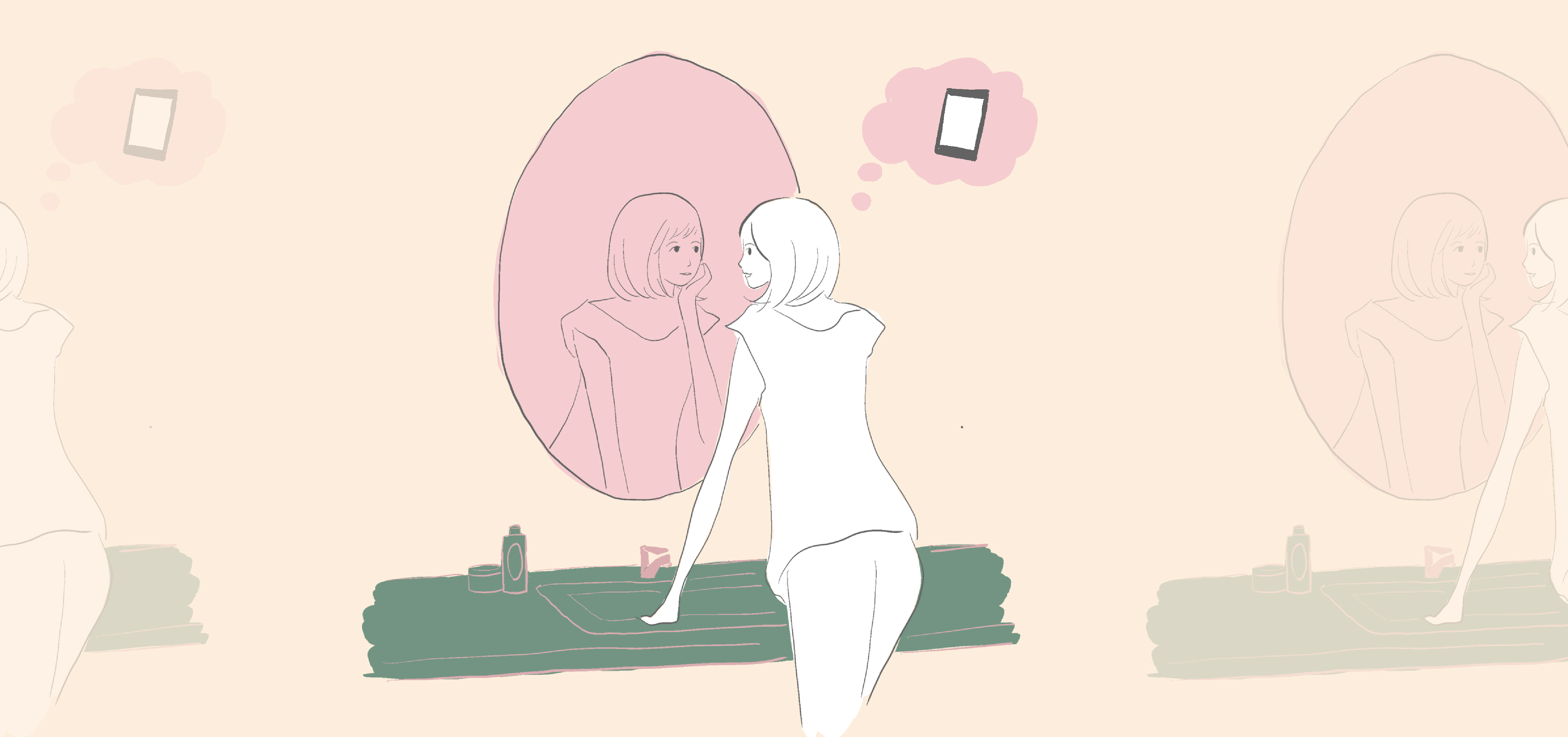
Sufficient and quality sleep has various health benefits, yet it has been shown that people make use of external influences which impact these processes negatively. One of these influences is the usage of screens. The blue light emitted from screens on devices like laptops, TVs and phones influences the brain's perception of night and day, therefore impacting the ability to and quality of sleep.
We propose the AR Mirror, a behavior changing intervention to support people to use their phones less after returning from work or school. By using visual effects, the impact of phone usage on sleep is shown to the user, leveraging reflective and persuasive techniques. With the AR Mirror, we aimed to support behavior change to improve the health of people. To validate our claims and the possible behavior change, an interaction level evaluation plan was set up.
Overall, the results of the empirical study on the interaction level were mixed to positive. Most participants thought the AR mirror could be a useful tool to enact behavior change on phone usage before bedtime, though the long term effects were not always easy to determine. By conducting the empirical study on the intervention level, as proposed in this design research study, the concept of the AR Mirror could be explored further and the behavior changing capabilities could be reflected upon more.
| Time frame: | 10-11.2021 |
| Category: | Behavior change, AR, phone usage |
| Development: | User and Society, Creativity and Aesthetics, Design Research |
| Course: | Elective course-Design for behavior change |
| Share: |
The project is heavily focused on incorporating the Behavior Change Technique (BCT) into the design challenge and the associated technology-based approach to evaluating the design rationale. As a result, the overall design research process can be divided into three parts.
First, we brainstormed on defining challenges based on the behavior change strategy, then identified the key elements for building the target behaviors for the next steps. The appropriate technology-based intervention was then defined based on our understanding of the role of behavior change technique and its functions.Following that, a theoretical research was conducted to ground the theories of behavior change that would be used in formulating the design concept in ideation. Finally, a functional prototype with AR effects was built, along with evaluation methods to be recognized for evaluating the concept's interaction and intervention level.
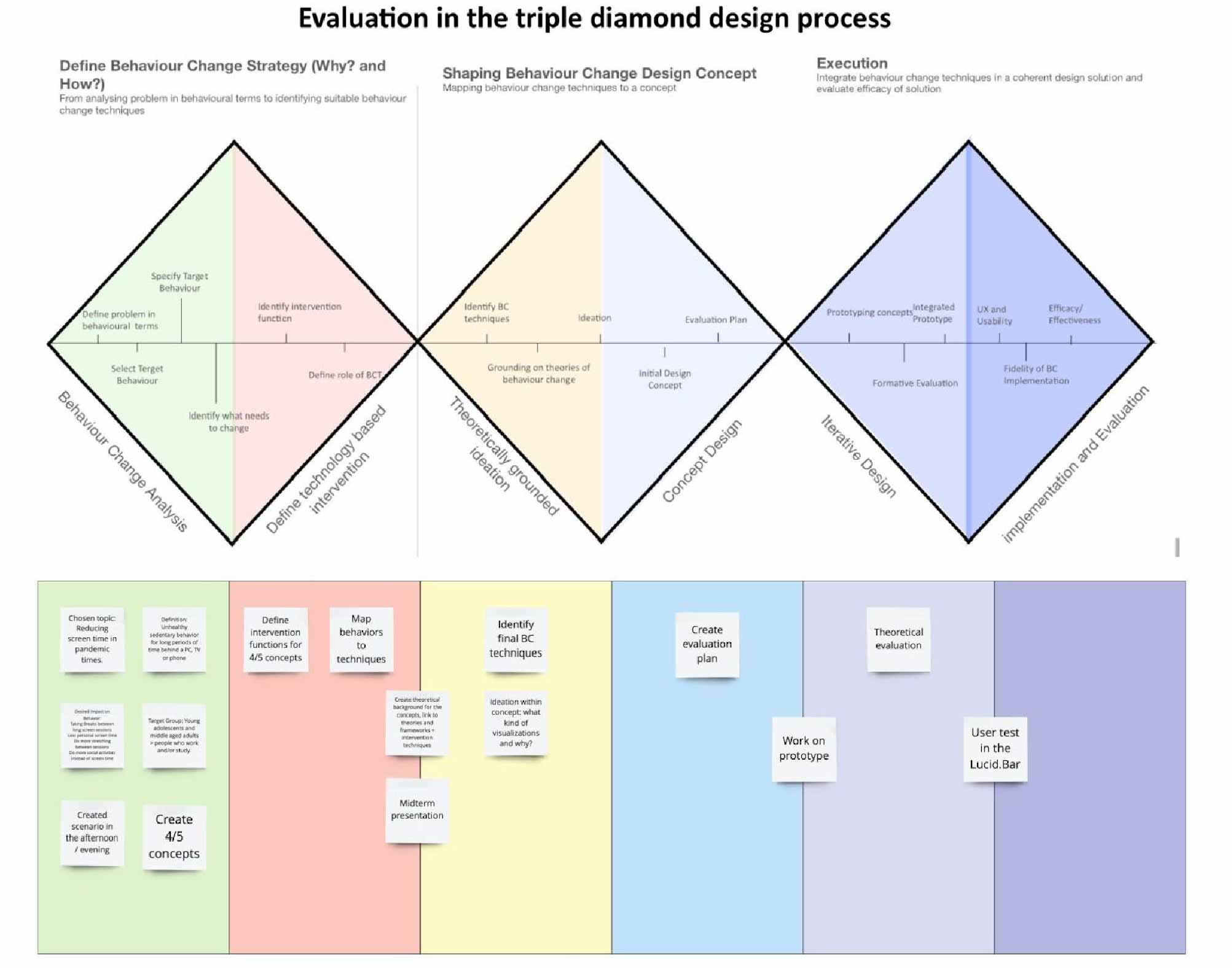
To further specify the design brief, the behavior to focus on, desired impact on the behavior, target group, stakeholders, and spillover effects were mapped. This served as a foundation for the initial COM-B analysis. A scenario timeline specifying the behaviors was created to draw the conclusion in the first phase.
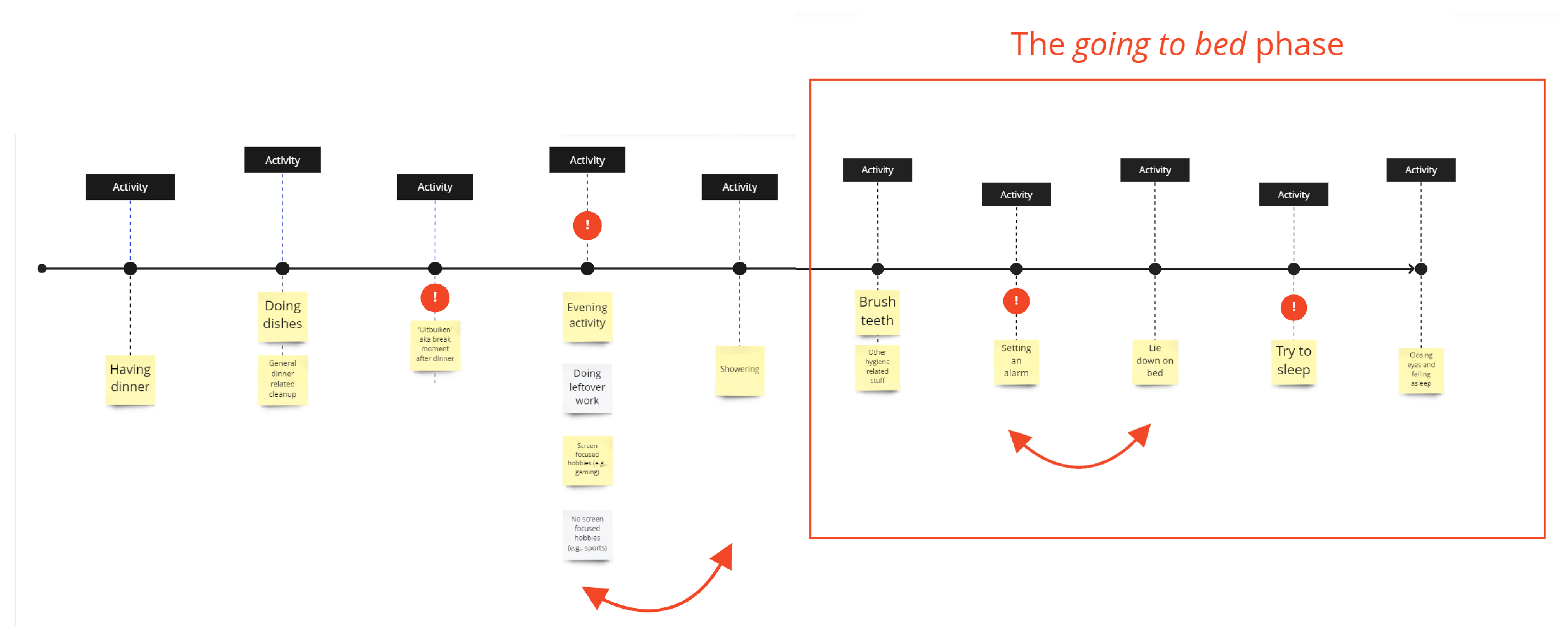
A scenario timeline specifying the behaviors in the target context
Using this foundation, initial analysis and timeline, opportunities were determined in the scenario timeline. These opportunities were described as behaviors to focus on and were mapped against behavior change techniques by using the COM-B analysis to determine an outline to base ideation on.
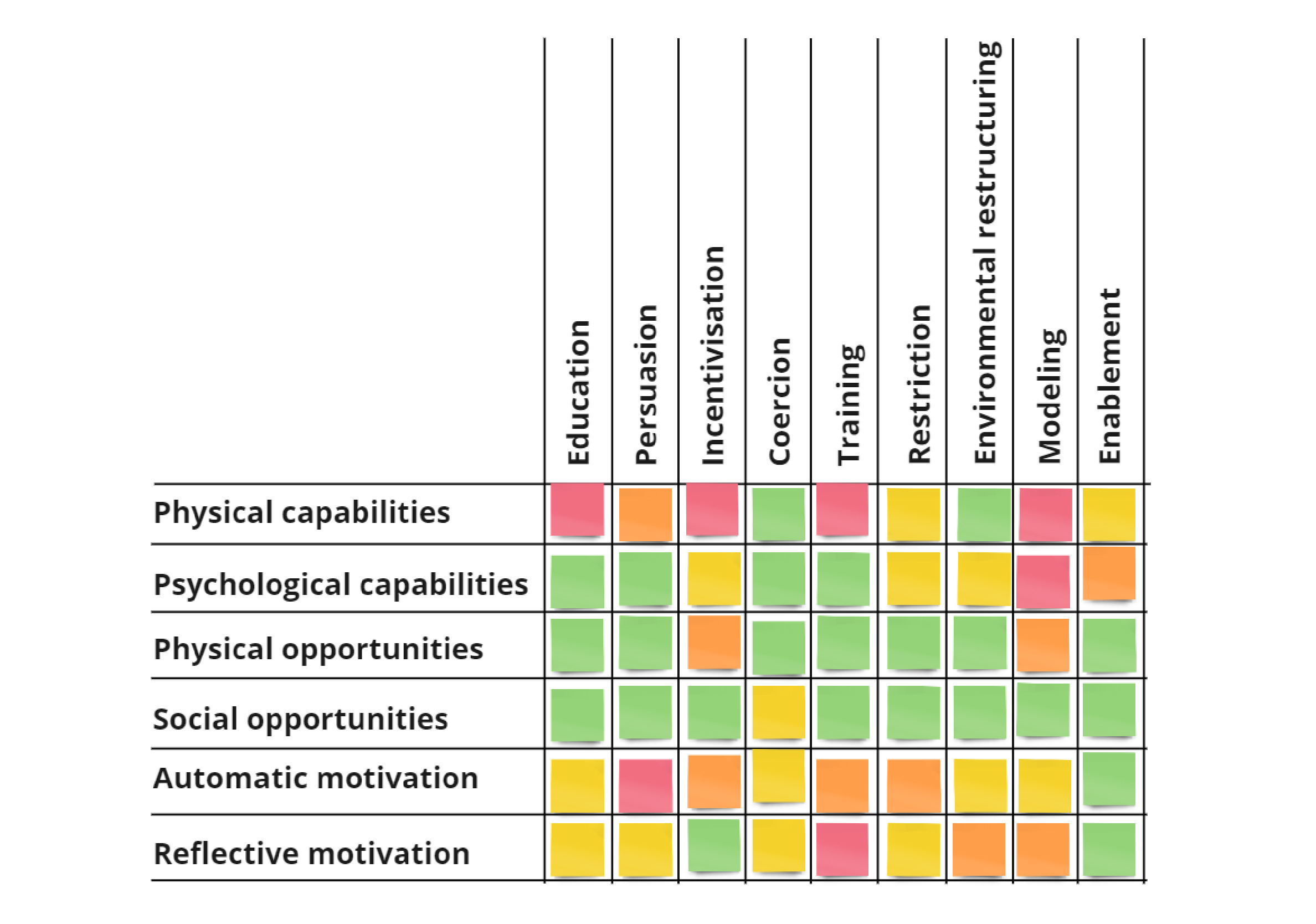
Mapping the behavior to behavior change techniques using the COM-B analysis.
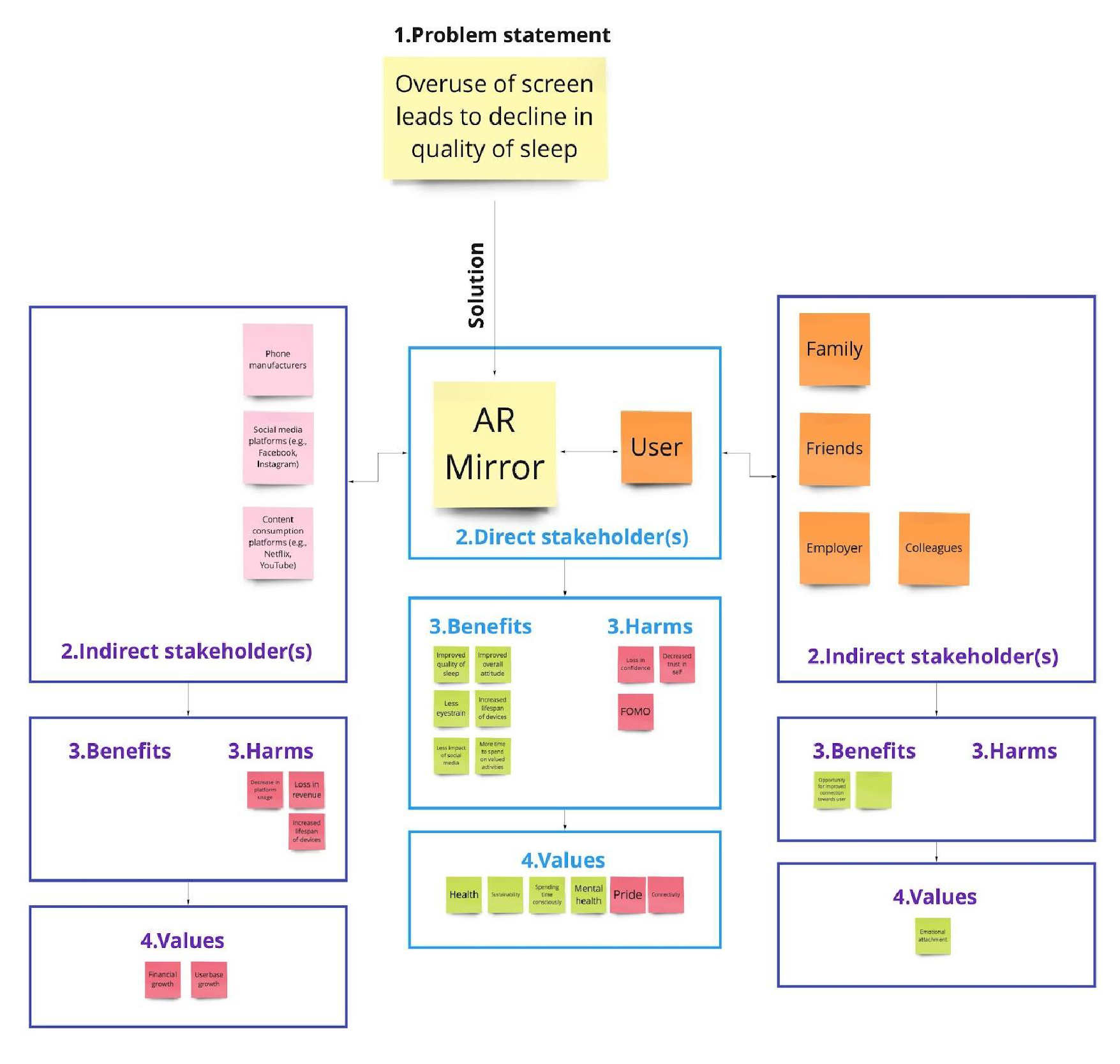
Figure shows the stakeholder mapping & defining for the recignized potential design opportunity(AR Mirror).
The AR Mirror is a smart mirror placed in close vicinity of a user during their daily routine after waking up and before going to bed. In addition to being a regular mirror, it is equipped with additional technologies to communicate the positive and negative impact of screen usage to the user of the mirror by means of visual and textual cues and manipulation.These manipulations consist of visual alterations of the image presented by the mirror. These alterations include blurred vision, tunnel vision, bad weather and tired looks.
The intervention and interaction are integrated to postively influence the users to perform change on their behaviors. The term Cognitive Capability is used to develop the link between the phone use behaviors and the consequences of overusing the phone before bedtime, such as sight compromised related outcomes (looking blurred and color loss). By means of health-care technology, the priority goal here is aimed at enabling the user to perceive, comprehend and perform proper health behaviors (Pak & McLaughlin, 2010). Second, in order to develop an automatic healthier habit, a rehearsed way of persuasion is allowed for repeating an intervention (Fogg,B.J., 2002).
For the interaction level, it provides personalization in individual adherences. The perceived control over the behavior change is crucial. A contextual way of presenting the severity of the performed phone use behaviors allows for more possibility of reducing phone use behavior before bedtime.
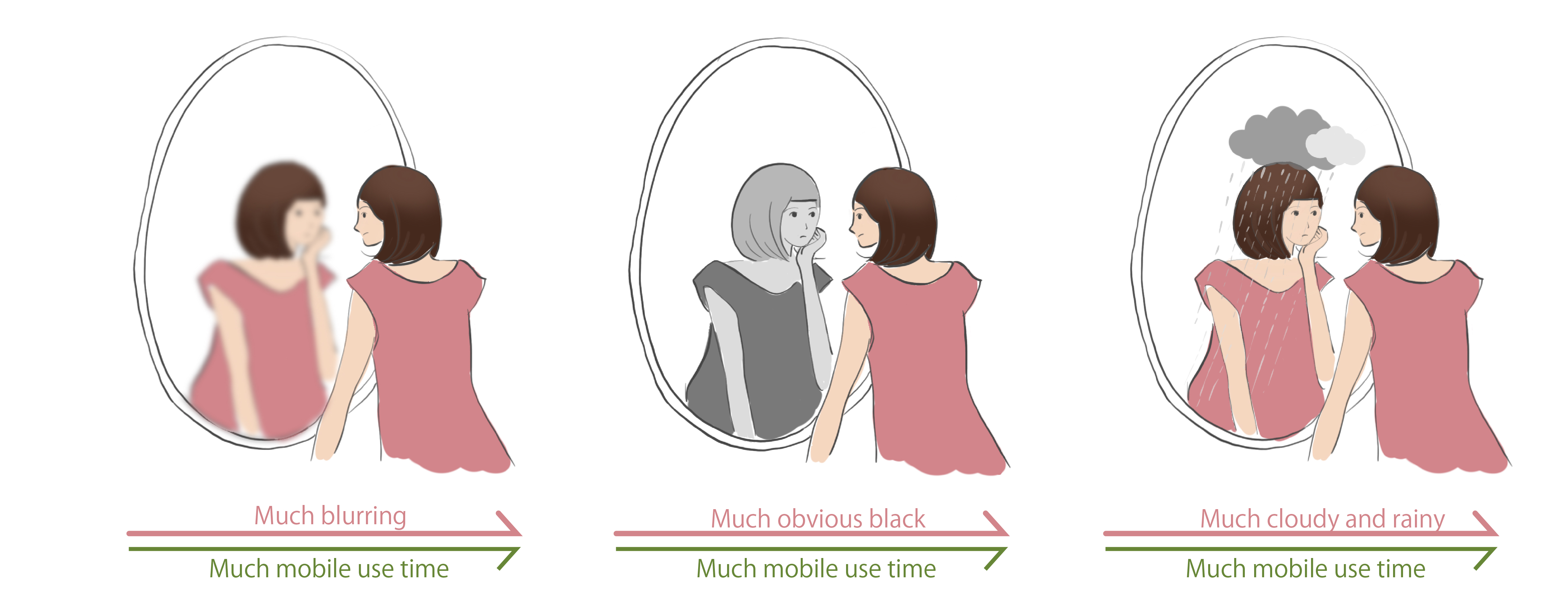
The three defined AR effects (interaction level) to be implemented in the bathroom scenario in the exact context.
The study was set up on the TUe campus. First, the proposed scenario was introduced to the participant, after which they were asked to fill in a survey, in which self-management and self-assessment on the habits of using a phone device before bedtime were discussed. Second, the participant was asked to place their mobile device in a box and was then invited to use a device (a laptop in this case) on which the AR mirror effects are displayed. The participant was told that these AR effects were a representation of their phone time use throughout the week. For each “day of the week” a different severity of effect was used to simulate the usage of the intervention level over five days.
The method of experiences sampling was adopted. Only one effect was initially used per participant, but they were asked about their opinion on the other effects at the end of the interview.
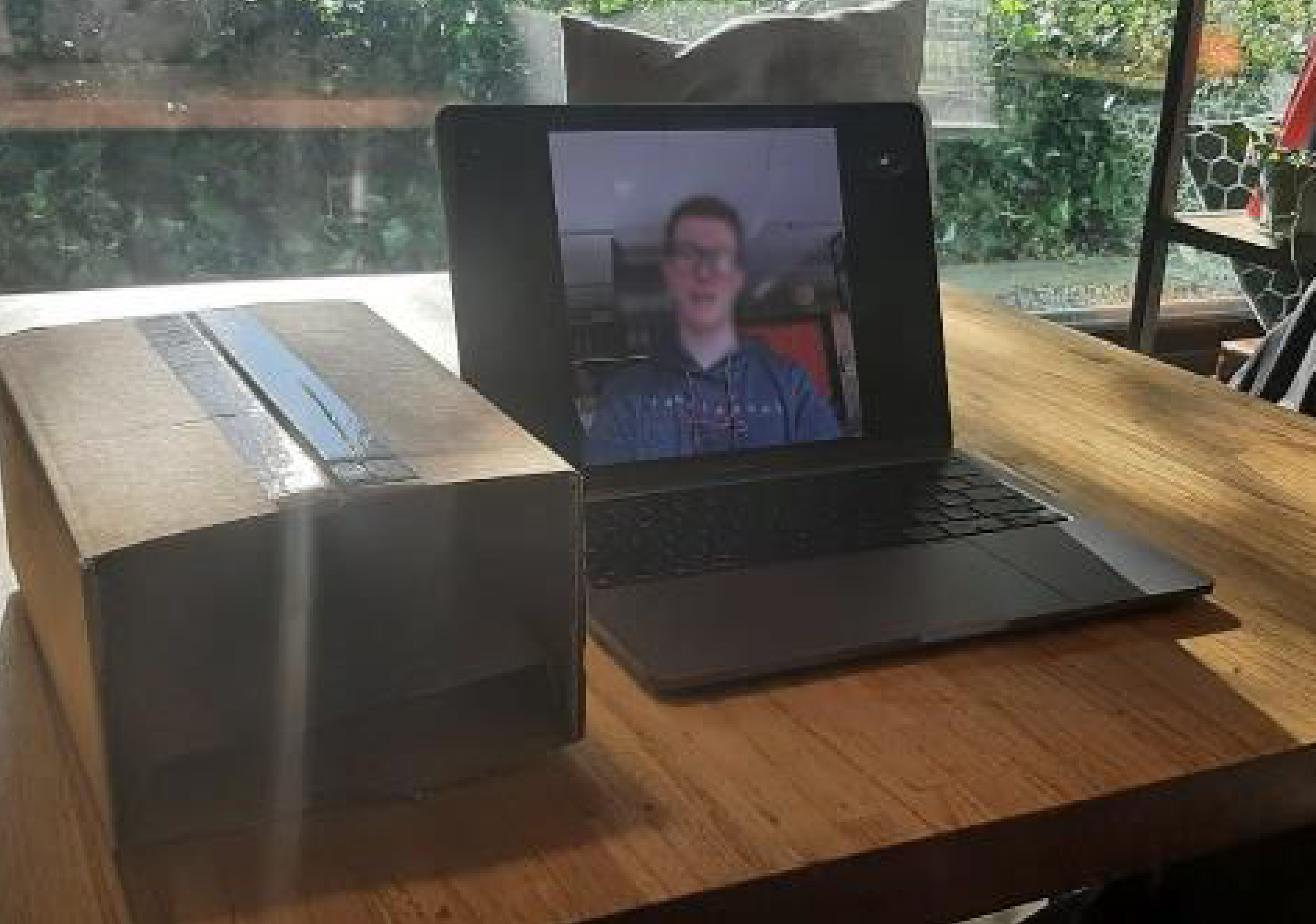
The working prototype deployed at a lab study setting.
Implemented AR Prototype to demo 3 implemented effects
Understanding the potential adherences for the stakeholders
The AR effects displayed personal information by using the cognitive capabilities to raise the awareness of the individual's phone use behaviors. The results unveiled that the role of the AR effects (intervention level) differ for users in different stages in behavior change (TTM) (User & Society) (Design Research).
Personal factors matter
There were 3 different effects proposed and validated in the study. The results revealed that the personal preferences can influence individual adherences in their everday use. Each AR effect (interaction level) show its potential to affect individuals, while individuals could have different feelings over the provided AR effects (Creativity & Aesthetics).
Future opportunities
In this study, phone use was chosen as a focus point because of the ease of tracking. However, the core principles of this study can also be applied to screen usage in general, including, for example; watching tv or playing video games. This would give a more accurate representation of the wear on the eyes of the participant, and might also be a more strict and accurate form of Stimulus control. Whereas, the AR effects (the interaction levels) can be made personlaized chosen for the bettern personal impact.